

Children’s and Young People’s Surgical Day Unit
If your child has injured their thigh bone or has been diagnosed with a condition called Developmental Dysplasia of the hips (DDH) and requires hip surgery, they will be placed into a hip spica cast. A hip spica is a type of cast used to immobilise and protect the hip joint or the thigh bone.
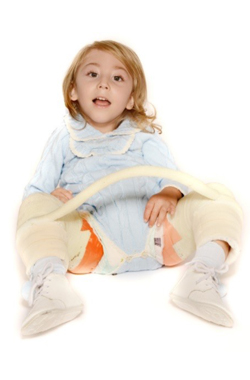
It is a hard shell made of plaster of Paris, fibreglass or polyester. It extends from the trunk of the body down to include one or both legs set in a reclined ‘frog’ position, with a gap left for toileting and nappy changes. This gap is protected with felt padding and waterproof tape.
A bar is usually placed between the legs of the cast to strengthen the cast and stabilise the legs. This bar can also be used as an aid to help manoeuvre your child in the spica.
Whilst in hospital you will be shown how to care for your child in the hip spica and it is very important that care is continued at home. The information in this leaflet will help guide you with this.
Important
Remember when your child is in a hip spica
- The Cast MUST remain dry at all times
- Check the cast daily and report any problems to us immediately
Bathing and hair washing
The hip spica is not waterproof so avoid getting it wet.
- Wash your child using a bowl of water and a sponge or face cloth.
This should be done once a day, making sure the water does not run down the sides of the cast. - Hair washing can be done over the edge of the sink or a bath with a jug.
You will need the help of another person so one can hold the child whilst the other washes the hair.
Toileting and nappies
Caring for your child’s toileting needs is very important. If your child uses nappies or pads you will be shown the double nappy technique. You will need to buy two different sized nappies.
- Double nappy technique
One smaller size to push into the groin area of the cast and one larger size to go over the cast. - Nappy needs to be checked at least every 2 hours through the day
Once overnight or if awake for any other reason. - Change nappy as soon as its wet or soiled
To reduce skin irritation and cast becoming wet. - Change wet felt or waterproof tape when needed
The ward will provide you with this and the nurses will show you the correct way to do this. - Gravity will help to pull urine or stools away from cast so position your child in an elevated position

Skincare
Skin care is very important to reduce the risk of pressure sores developing. Your child’s skin should be checked regularly.
- To check your child’s skin, gently press the skin back around all areas of the cast. Use a torch to give more light and carefully look and feel for any red areas, blisters, or sores
- Ensure the buttocks are dried thoroughly to prevent rashes and soreness developing
- Do not use lotions or powder as these can irritate the skin
- Do not allow your child to stick any objects down the cast such as crayons, coins, Lego, small toys etc.
Positioning
Children in hip spica casts cannot move around easily so you will need to change their position frequently. This is necessary to avoid your child getting sore under the cast.
Change your child’s position every 2 hours through the day. Change the position once in the night, or again if they are awake for any other reason.
Children can be positioned on their back and either side using pillows for support.
Lying on their front is a good position to play. Using a pillow or towel to support them in this position can help keep them comfortable.
Every time you change your child’s position, check that the cast is not digging in or too tight around the edges. This also applies when placing them in the car or pushchair or wheelchair. Ensure the feet can move freely after each position change as this could cause a pressure sore.
If red areas develop, particularly on their back or heels, please contact the ward or specialist nurse for advice.
Special seating or chairs are available from occupational therapy.
Beanbags are extremely useful as they mould around the child and give appropriate support.
Feeding and diet
It is important that your child continues to eat and drink well but avoid overfeeding.
- Breast feeding infants can and should continue to breastfeed. You may need to experiment with different positions to find the one that suits you best.
- If your child is eating solids, or normal family diet, rather than three large meals you may need to giver smaller meals more often because the cast around the tummy can become tighter.
- Sit your child in an upright position to aid comfort and digestion.
- Do not introduce new foods as this may cause loose stools (diarrhoea) and soil the cast.
- Encourage plenty of fruit, vegetables and fluids to prevent constipation and to promote healing.
Your child will continue to grow whilst the cast is in place, so check regularly to make sure the cast is not too tight.
Clothing
Your child may require larger clothes to fit around the cast.
- Dresses for girls usually fit over the cast with no problems.
- Underwear for older children can be adapted using Velcro or ties.
- Avoid socks that are too tight.
- The cast can make your child hot, so lighter clothing than usual may be required.
- Trousers, shorts and pants can be adapted by undoing the seams and applying Velcro, press studs or ties.
Entertainment
Your child may become bored if they were previously very active.
- Try to make sure toys, games, and puzzles etc. are within easy reach
- Frequent scenery changes will help with boredom
Lifting your child
- When lifting your child, it is important to support them and the weight of the cast. To do this, lift your child by the waist and legs as shown on the ward
- Keep your child as close as possible to your own body when picking them up to protect your back. Older children may require a hoist at home to aid this
Moving and Transportation
It is illegal to transport your child unrestrained in a car.
Your child will need an appropriate car seat for travelling whilst in the hip spica.
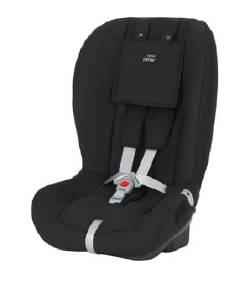
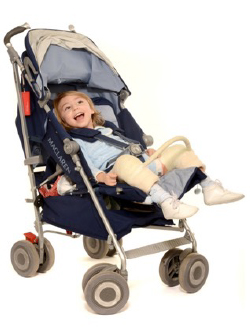
The trust has a small number of adapted car seats available for free loan if your current seat is not appropriate. The specialist nurse will discuss this with you.
The occupational therapist will give you advice on any other equipment that may help, such as a pushchair, before your child goes into their cast.
Hip spica cast: Change or removal
Change of hip spica cast
Your child may require a change of the hip spica cast approximately 6 weeks post hip surgery. This is usually done under a general anaesthetic.
This procedure does not generally cause any discomfort but you can give pain relief, such as paracetamol, if it is required. You should continue to care for your child in the new cast in the same way.
Removal of hip spica cast
Your child’s consultant will discuss with you and decide if your child requires a general anaesthetic for removal of the hip spica.
Following cast removal, your child may have:
-
Some discomfort due to stiffness or muscle spasms.
You can give pain relief as required. Your child’s skin will look scaly and dry.
This will resolve once bathing has been reintroduced and a little moisturiser used.
Your child may continue to adopt the position of the hip spica cast. This is normal. It is important not to force your child to move their legs, or weight bear. This will happen naturally as they become more comfortable.
Encourage floor play which allows them to move at their own pace. Warm baths will help to relax and reduce any stiffness in their muscles.
Most babies and small children will take a little while to get used to their freedom and ease back into normal life.
Physiotherapy is not routinely required and is at the discretion of your child’s consultant.
Abduction brace
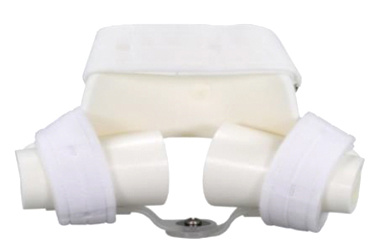
Your consultant may want your child to use a removable type brace called an Abduction brace for a period of time after the spica has been removed.
An abduction brace is a removal plastic brace with Velcro straps that is worn over clothing. This is to help keep your child comfortable following cast removal, particularly if they have had a long period of time in a hip spica cast.
It is generally worn for 23 hours a day for 6 weeks, then adjusted to night and nap time. It allows your child’s mobility to develop naturally.
Follow up
Your consultant will arrange an appropriate follow up appointment to check on your child’s progress.
Who can I contact for advice?
If you are concerned in any way about your child, please contact us for advice.
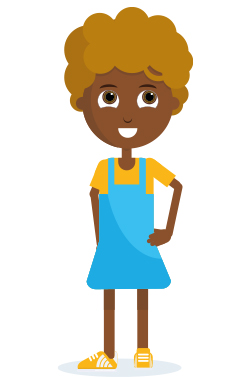
- Angela Riddle: Paediatric orthopaedic specialist nurse Monday to Friday, 8:30pm until 17:00pm
Telephone: 07387 258114
Email: [email protected] - Ward 22
Telephone: 01642 854522 (24 hours) - Children’s surgical day unit
Monday to Friday – 7.30am until 19.00pm
Telephone: 01642 854927
Additional information can be found at:
www.steps-charity.org.uk
Patient experience
South Tees Hospitals NHS Foundation Trust would like your feedback. If you wish to share your experience about your care and treatment or on behalf of a patient, please contact The Patient Experience Department who will advise you on how best to do this.
This service is based at The James Cook University Hospital but also covers the Friarage Hospital in Northallerton, our community hospitals and community health services.
To ensure we meet your communication needs please inform the Patient Experience Department of any special requirements, for example; braille or large print.
T: 01642 835964
E: [email protected]
The James Cook University Hospital, Marton Road, Middlesbrough, TS4 3BW.
Telephone: 01642 850850
